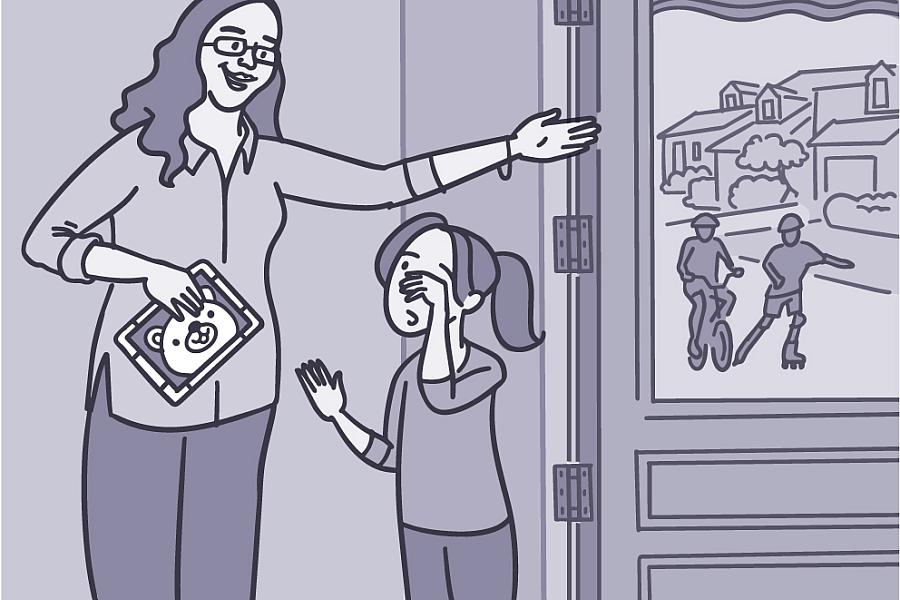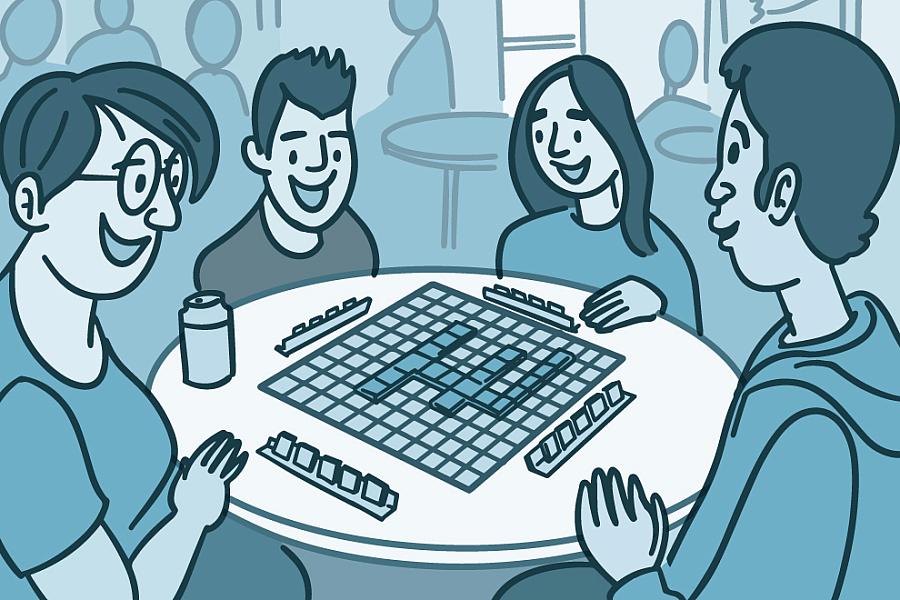Weighty Issues for Kids
Taking Aim at Childhood Obesity

Kids face a lot of challenges as they grow up: Learning how to make and keep friends, get homework done and have fun while staying safe. But children today are now confronting a growing, oversized problem that puts them at risk for a host of lifelong medical conditions. That problem is childhood obesity.
Kids won’t be able to tackle this one on their own. Fortunately, there’s a lot that families and communities can do to help reduce childhood obesity.
Obesity rates have nearly tripled among youth over the past 3 decades. Today, about 1 in 3 children and teens in the U.S. is considered overweight or obese.
Excess weight boosts the chances of developing heart disease, stroke, type 2 diabetes, asthma, liver disease and several types of cancer. Other conditions linked to obesity—such as high blood pressure and high blood cholesterol—are increasingly diagnosed during childhood.
Sadly, medical issues are not the only problems these kids face. Obese children and teens may also struggle with social discrimination, low self-esteem and depression. They are more likely to become obese adults and face continuing troubles.
The main causes of excess weight in childhood are similar to those in adults. Obesity has a strong genetic component, and our in-the-car, computer-bound, food-everywhere society contributes to the problem for an increasing number of people of all ages. But you can help to counteract these influences by creating an environment for your child that encourages healthy eating and physical activity. That effort begins at home.
“Adults can help shape the environment that children interact with by providing opportunities to eat healthy foods—such as vegetables, fruits and whole grains—and limiting sugar-sweetened beverages and fast food,” says Dr. Layla Esposito, who oversees some of NIH’s research into childhood obesity. “It’s also important to limit screen time on TVs, computers and video games, and provide opportunities for physical activity.”
“Newer studies are showing that getting adequate sleep may also be important for weight management,” Esposito adds.
Experts agree that our weight is affected by how our environment is structured. Known as the “built environment,” it includes not only your home but also everything in your neighborhood and community, including how the roads, parks and food sources are laid out. Experts say built environments don’t just affect physical activity; they also affect the foods we choose and how much time we spend inside.
Although it’s important for individuals and families to commit to eating healthy and being active, the broader community can also play a role. Kids move among many different environments, all of which shape and affect their decisions about food and activity. Parents, caregivers, schools, governments, community groups and religious organizations can also help by working to develop supportive, healthful environments to encourage these life-long choices.
“I think a lot of people have the sense that it’s about willpower and things that are completely in people’s control,” says Dr. Stephen Daniels, a pediatrician and researcher at the University of Colorado School of Medicine. “If that were the case, we wouldn’t have the obesity epidemic that we’re having. We live in an environment that is not structured to improve diet and activity choices.”
For example, many communities don’t have grocery stores, which can mean reduced access to fresh and nutritious foods. In some neighborhoods, the packaged, processed snack foods offered at convenience stores and corner markets are the only choices available.
Some communities don’t have safe playgrounds or sidewalks, so children are forced to spend their free time indoors. Sitting instead of moving makes it that much harder to maintain a healthy weight.
Among NIH’s many ongoing studies in this area are 2 major new research efforts to curb the nation’s childhood obesity epidemic. One will evaluate the successes of long-term approaches designed to prevent or treat childhood obesity. The other will examine the efforts communities have been making to reduce childhood obesity.
Rather than focusing only on the behaviors of individuals, these new studies look at existing long-term interventions and consider many different levels of influence, including community youth organizations, schools, home and families.
“The focus is now on multilevel approaches. It’s not only the individual, but the family, the physician, schools and the larger community,” says NIH’s Dr. Charlotte Pratt, who helps manage the new studies. “We have learned of things that work in a single environment, but children do not only live at home.”
It’s important for parents, teachers, and communities to feel empowered in this fight for the health of a generation and to be role models of healthful behaviors.
“Parents have a really important voice that policymakers need to hear,” says Esposito. She encourages parents and communities to consider what they need for change, and then to ask for it. Think about what is being marketed to your kids, if you want more walkable streets or parks, or if you need access to healthier foods or farmer’s markets.
You might try making a list of the improvements you could make in your community. Then get together with your neighbors and local leaders to discuss how you can make those ideas a reality. Consider talking to your local school board or PTA about food offerings or advertising in school.
Many communities have started by improving access to and maintenance of local parks; requesting safe and usable bike paths and sidewalks; asking for healthier meals and more physical activity at school; and exploring how to address a lack of nutritious food options and grocery stores.
While you’re working to create a healthy environment, keep in mind that your own behaviors set a powerful example for your children. If parents aren’t making healthy changes and choices for themselves, then it’s hard to expect children to understand what’s best and make wise choices for themselves.
NIH has many resources to help you and your children get on the path to a healthier lifestyle. Be sure to check out the links on our website.
NIH Office of Communications and Public Liaison
Building 31, Room 5B52
Bethesda, MD 20892-2094
nihnewsinhealth@od.nih.gov
Tel: 301-451-8224
Editor:
Harrison Wein, Ph.D.
Managing Editor:
Tianna Hicklin, Ph.D.
Illustrator:
Alan Defibaugh
Attention Editors: Reprint our articles and illustrations in your own publication. Our material is not copyrighted. Please acknowledge NIH News in Health as the source and send us a copy.
For more consumer health news and information, visit health.nih.gov.
For wellness toolkits, visit www.nih.gov/wellnesstoolkits.




